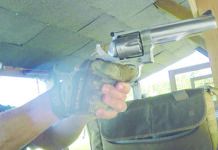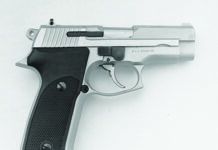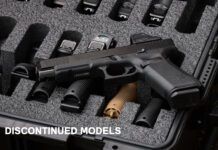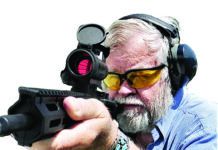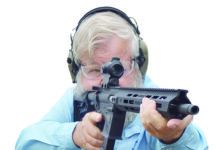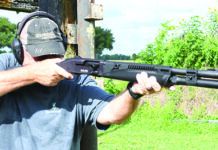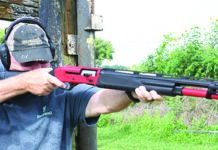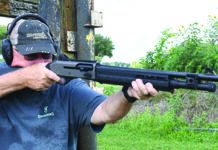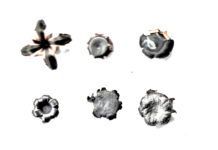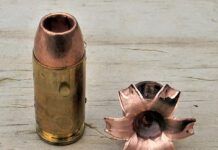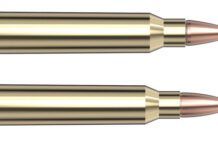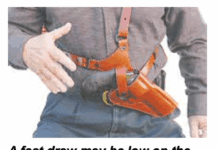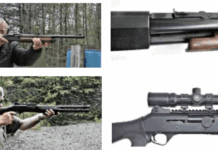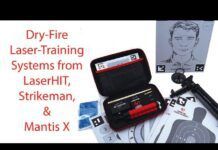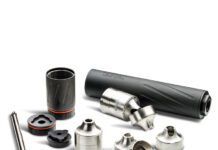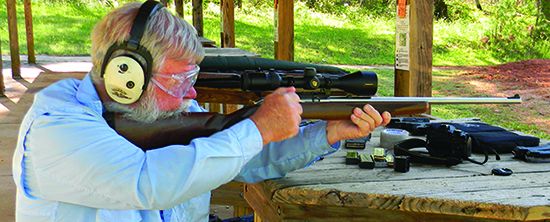For the rifleman, there is nothing that soothes the soul and brightens the day like a good-quality 22 bolt-action rifle. For the serious rifleman who hunts with a centerfire rifle, the 22 offers alternative training options and makes for a fine small-game rifle. Some shooters realize a more expensive rifle may be needed for precision work and small-game shooting, and an adult-size stock for an adult makes sense. This bumps the price up over the simple $200 bolt gun.
In most models, the bolt-action rifle will exhibit superior reliability compared to a semi-automatic rimfire. Also, the bolt action will feed and function with cartridges shorter than the 22 Long Rifle, including 22 CB cap, 22 Short, and 22 Long. Standard-velocity and even lower-velocity 22 cartridges are perfectly reliable in the bolt action, which is manually operated and doesn’t rely on recoil springs to complete the feed cycle.
We took all these considerations into account as we worked up a 22 bolt-action shoot-out pitting a Ruger American Rimfire Talo Exclusive 8359 22 LR, $569, against Springfield Armory’s Model 2020 Rimfire Classic Rifle BARC92022GAA 22 LR, $710. Are the rifles worth the price? They are. Still, we made choices that drove the price up and perhaps did not improve performance. The Ruger American is only available from Talo, the distributor who does quite a few special firearms with Ruger, and this one came with a nice walnut stock and stainless-steel barreled action. The Springfield 2020 Classic’s stock was AA Turkish walnut and was quite fetching. Yes, we realize these cosmetic upgrades aren’t necessary to the function of the rimfire rifles, but beauty is its own commodity. Let’s see how the action panned out.
Ruger American Rimfire Talo Exclusive 8359 22 LR,
$569
Gun Tests grade: A
This is a well-made rifle, a classic in many ways. We find the Ruger satisfactory in every way, but we simply did not like the dated optics-mounting system. However, the rifle is supplied with iron sights.

| Action | Bolt, 60-degree throw |
|---|---|
| Overall Length | 41.0 in. |
| Barrel | Stainless steel, 22.0 in. long, 1:16 in. RH twist, 6 grooves |
| Overall Height | 4.2 in. |
| Weight Unloaded | 6.1 lbs. |
| Weight Loaded | 6.2 lbs. |
| Weight Scoped | 7.1 lbs. |
| Receiver | Satin stainless steel |
| Stock | Smooth-finish walnut; Power Bedding block, sling swivel studs |
| Stock Length of Pull | 13.75 in. |
| Magazine | (1) BX-1 rotary flush mount, 10 rnd; accepts all 10/22 magazines |
| Trigger Pull Weight | 3.0 lbs. as tested, Marksman Adjustable Trigger |
| Sights | Gold bead front; adjustable rear |
| Optics Mounting | 3⁄8-in. dovetail, drilled and tapped for Weaver #12 bases |
| Safety | Tang mounted slider |
| Warranty | No written warranty |
| Telephone | (336) 949-5200 |
| Website | Ruger.com |
| Made In | U.S. |
The wood-stock Ruger American Rimfires in 22 LR, 22 WMR, and 17 HMR are available with stainless metalwork and one blued version, the 8329 in 22 LR. There are also several chamberings with blued metalwork and American-flag hardwood stocks. There are many other offerings with synthetic stocks in the Standard, Compact, Target, and Long-Range Target lines, and those can run as low as $429 in blued-steel versions. The Talo Exclusive Ruger American Rimfire in stainless is an eye-catching rifle, and stainless steel is resistant to corrosion, of course. On the other hand, the blued finish of the Springfield has proven resistant to foul weather, if you take care of it.
Ruger’s American features a free-floating barrel, as does the Classic. A good feature on the Ruger is the Marksman trigger. Adjustment is rated at 3 to 5 pounds, and there are tricks to make it lower, but we settled into a 3-pound pull and left if there. Before firing any new gun these days, be certain to clean grease out of the trigger mechanics.
The Ruger American is an adult-sized rifle. Fit and finish and marriage of the stock to the action are excellent. The oiled walnut stock features checkering around the semi pistol grip and fore end. The grip cap features a Ruger trademark. A soft-rubber recoil pad, unnecessary on a rimfire, nonetheless makes certain the rifle is stabilized against the shoulder. The magazine is the familiar 10-round Ruger rotary style. The magazine release is the modern extended version. The trigger guard is plastic. The rifle is delivered with iron sights. There is no scope rail in the box, so we ordered a rail from Brownells.com, adding $40 to the package. While well made and sturdy, this rail was an expense that had to be tacked on to the total cost of the rifle.
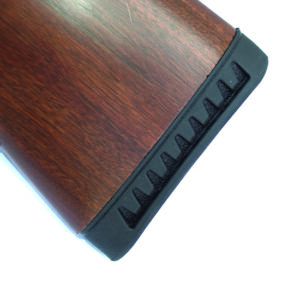
The trigger action is easily adjusted by removing the stock. A screw near the end of the trigger action is turned to lighten the action or turned back to regain weight. The blade-type lever in the trigger face must be depressed to fire the rifle. The safety is located just behind the bolt. After fitting the optics rail, we mounted a Nikon 3×9 optic. (Nikon no longer offers rifle scopes. SIG has taken up the line under the SIG banner.) This scope has done yeoman service on several rifles and always performs well. Because we would be shooting at 50 yards, we didn’t feel the scope was overpowered. On the contrary, we felt a cheap rimfire scope would not have brought out the best in a quality rifle.
We put together a good mix of ammunition for testing and evaluation. We elected to fire 100 cartridges in each rifle, and that turned into 200 in each rifle. One reason was working with feed problems and another was shooting for sheer fun. After sighting the optics in, most of the initial evaluation consisted of firing at targets from 25 to 100 yards off hand. We noted the Ruger’s bolt throw was very smooth and short. We needed but two fingers to flick the action and lock it up tight. With the supplied 10-round rotary magazine, feed reliability was good.
We used Federal Hunter Match, CCI Segmented Mini-Mags, and the CCI Stingers in bench testing at 50 yards. The CCI 32-grain Stinger is a hot, fast load not often considered to be the most accurate 22 Long Rifle high-velocity load. It is often used for hunting and pest control. We feel that an all-round sporting rifle should be accurate with a wide range of ammunition. Some will be more accurate than others. The Ruger was very consistent. Results with five-shot groups were as tight as 1 inch at 50 yards. All three loads were more than accurate enough for small game. The Springfield was only slightly more accurate, but the difference was measurable. In offhand firing at small targets at known and unknown ranges, the results were a toss-up.
The Ruger American handles well. While it is lighter than a full-size centerfire rifle, the handling is similar to a full-size hunting rifle.
The reader is probably expecting us to note that there were no failures to feed, chamber, fire, or eject. But this would not be true. We had on hand four 10-round and one five-round Ruger 10/22 magazines. The five-round magazine is a special order for capacity-restrictive states and perhaps some states that limit magazine capacity in hunting rifles. All fed properly in each rifle without exception. Moving to Ruger BX extended magazines was another story. The Ruger BX mags, a solid and a clear-side version, refused to feed properly. The same issue continued with the Springfield 2020. It is convenient to use these magazines, and we wondered what was going on. Both magazines were often used in one of the rater’s Ruger 10/22 rifles with good feed reliability. We double-checked in the 10/22, and no, the magazines had not been dropped or the feed lips damaged. They ran fine in the 10/22. The cartridge nose was not being presented at the proper angle in the bolt-action rifles. The problem was diagnosed as the follower sliding on the inside of the magazine and creating friction. Conversely, in the semi-automatic, this bit of slop was not an impediment. We had on hand a new-production BX magazine, and it worked just fine. It seems late-model Ruger magazines work fine, the shortcoming has been addressed. Odd that a bolt gun would not feed with a magazine that works fine in a semi-automatic. There is a subtle difference in geometry, apparently.
Our Team Said: In the end, the Ruger American Rimfire is an attractive and accurate rifle. Only the prospective owner may answer the question, is it worth the extra money to purchase a walnut stock and stainless-steel barreled action? The rifle is very accurate and smooth. The sole ding we put on it was we don’t like the scope-mounting system compared to more modern designs with integral rails. The Springfield’s monolithic rail is superior, and it came on the gun.
| 22 LR RANGE DATA | ||
|---|---|---|
| CCI Stinger 32-grain CPHP | Ruger American Rimfire TALO 8359 | Springfield Armory Model 2020 Rimfire Classic |
| Average Velocity | 1569 fps | 1511 fps |
| Muzzle Energy | 175 ft.-lbs. | 162 ft.-lbs. |
| Smallest Group | 1.25 in. | 1.1 in. |
| Average Group | 1.45 in. | 1.3 in. |
| CCI Mini-Mag 40-grain SHP | Ruger American Rimfire TALO 8359 | Springfield Armory Model 2020 Rimfire Classic |
| Average Velocity | 1255 fps | 1221 fps |
| Muzzle Energy | 140 ft.-lbs. | 132 ft.-lbs. |
| Smallest Group | 0.9 in. | 0.8 in. |
| Average Group | 1.25 in. | 1.2 in. |
| Federal Hunter Match 40-grain Match HP #720 | Ruger American Rimfire TALO 8359 | Springfield Armory Model 2020 Rimfire Classic |
| Average Velocity | 1180 fps | 1155 fps |
| Muzzle Energy | 124 ft.-lbs. | 118 ft.-lbs. |
| Smallest Group | 1.0 in. | 0.8 in. |
| Average Group | 1.3 in. | 1.1 in. |
We fired groups at 50 yards from a bench rest using an MTM Case-Gard K-Zone Pistol Rest. We used a Competition Electronics Pro Chrony to measure velocities. The first screen of the chronograph was 10 feet from the muzzles. HP = hollow point. SHP = segmented hollow point. CPHP = copper-plated hollow point.
Written and photographed by Bob Campbell, using evaluations from Gun Tests Team members. GT




